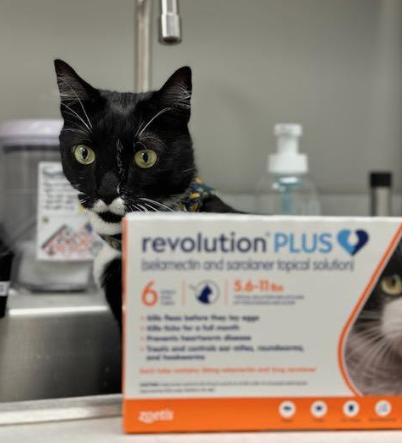Heartworms

This morning my coworkers applied my once-monthly Revolution Plus to the back of my shoulder blades. I made the task as difficult as I could—oh, how I hate that wet, sticky feeling! What is this ritual even meant to accomplish? But then they explained…
Apparently, my fellow furry friends are at risk from these nasty creatures called heartworms, and our humans take these precautions to keep us safe. They told me heartworms are actually spread by mosquitoes—yes, mosquitoes! Can you imagine? Just one bite from a mosquito who’s already bitten an infected dog, fox, or coyote can put us at risk. Then, if a dog isn’t on heartworm prevention, well… that’s when things start to go very wrong.
My coworkers also told me the heartworm lifecycle is actually pretty complex. Once a dog is infected, it can take six months for them to even detect it in a test. During that time, the worms set up camp in the dog’s heart, growing and causing all sorts of damage. And if a dog does end up with heartworms, it’s a big ordeal to get rid of them. It takes months, costs a lot of money, and requires the poor pup to stay calm the whole time. That’s a lot of sacrifice and stress for everyone involved!
Then they told me something that really caught my attention: if a cat gets heartworms, there is no treatment. None at all! And this is why they insist on giving me this prevention every month, even though I’m an indoor kitty. It turns out, mosquitoes can sneak into the house just as easily as they find our dog friends outdoors. Who knew?
So perhaps I should give my coworkers an easier time next month when they apply this prevention. Then again…
xo Tonic, with help typing from Dr. Schroedel
